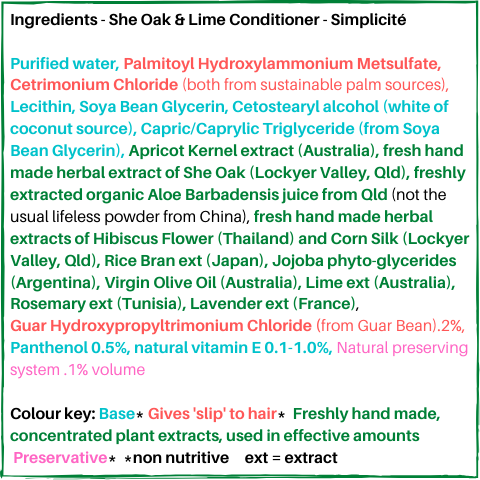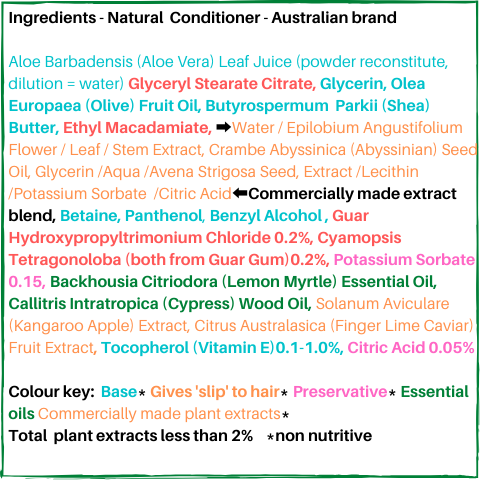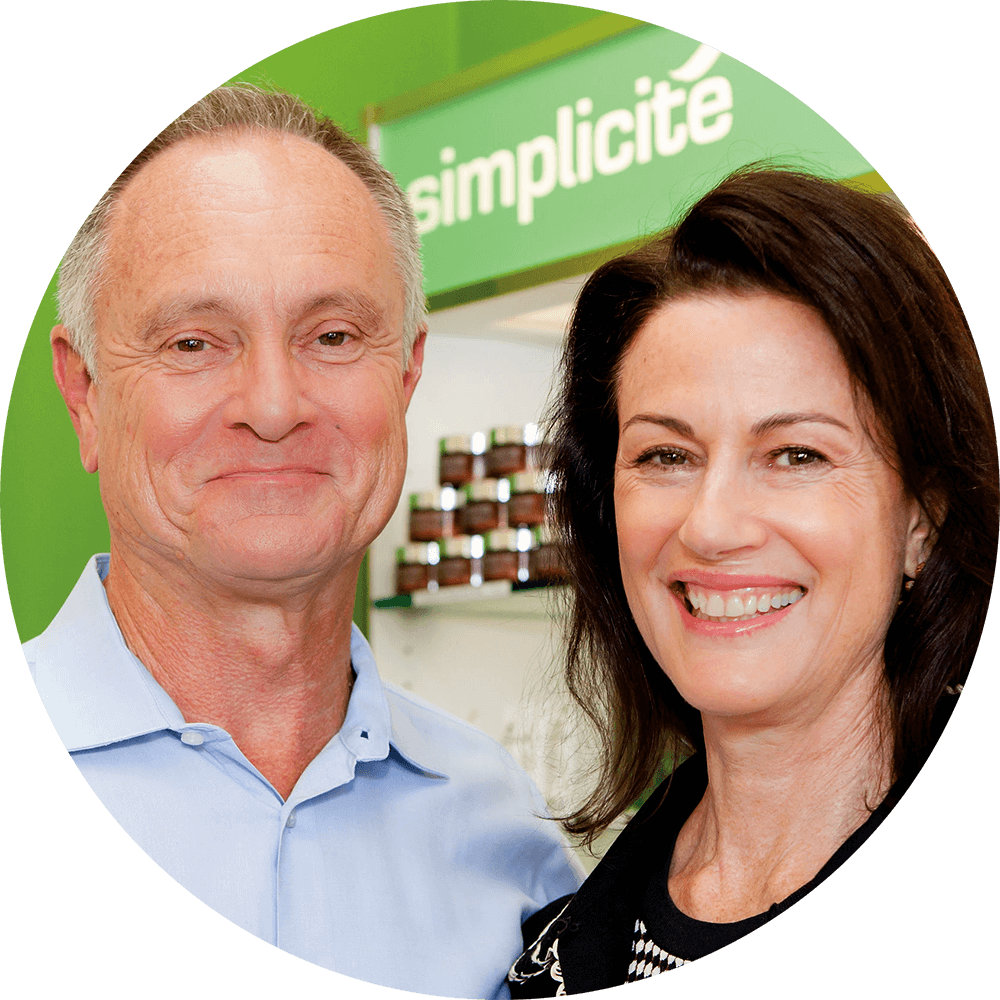Forget what you've read is causing hair breakage, damaged hair and hair dryness.
Radical info about hair breakage
This may sound radical when perhaps in your lifetime you've read a LOT of articles that say:
- Colouring and bleaching hair causes hair breakage and hair dryness.
- Applying heat when styling hair causes hair breakage and hair dryness.
- Even, 'wearing your hair in a top knot' stretches hair' - which (somehow) damages it.
But it's not heat, bleaching, harsh chemicals or pulling hair that causes hair breakage.
What is hair breakage?
Hair breakage is when the hair shaft breaks, usually close to the root or halfway down the shaft. As a result, some hair is left much shorter than the rest.
Hair breakage causes heartbreak because it cuts short the natural lifespan of hair strands.
What's really causing hair breakage, damage
We believe what is really causing hair breakage, dryness and other hair damage is simply that shampoo, conditioner and special hair 'treatments’ don't contain enough nutrient. (By nutrient, we mean plant nutrient.)
Only effective levels of concentrated and beneficial plant nutrients can give hair the strength it needs to resist damage - any sort of damage you throw at it.
Are some hair types more prone to hair breakage?
Some people are born with thick hair, others with fine hair.
However, none of us are born with brittle hair, as is so often claimed in articles written about hair breakage and hair damage.
Brittle hair and thin hair are created conditions.
They are the sorry end result of using hair products that lack beneficial nutrients -this lack makes hair vulnerable to damage.
How to prevent (and repair) hair breakage
Strengthening the hair cuticle is what will protect it from being damaged by heat, colouring, bleaching and general wear and tear.
According to Simplicité Skin Care's founding naturopath and herbalist David Lyons, the only way to strengthen the hair cuticle is to continually feed it worthwhile amounts of rich plant nutrient.
High quality, strong and concentrated
Uniquely, we use our own synergistic combinations of our own concentrated plant extracts, freshly hand made by us from medicinal grade herbs we source mostly from Australia but from elsewhere when we can't find the quality we want here.
We won't use commercially made plant liquids and powders. We don't mean to case offence by saying this. It's just that we need high quality, strong extracts to give the results our products are known for.
It's because David Lyons originally couldn't find this quality commercially that he began
1. freshly hand making his own plant extracts from herbs sourced specifically for their high activity.
2. Making these extracts as strong and concentrated as possible.
Used in effective amounts
As we said above, it's only using worthwhile amounts of rich plant nutrient that will make a difference to hair and skin.
A hair strengthening conditioner
Our conditioner contains high levels of beneficial-for-hair plant nutrients.
In the below comparison of conditioners we shine a spotlight on plant extracts and whether are as effective as claimed to be.
Compare: conditioners with plant extracts
BLUE is the product base, ORANGE the 'slip' that's needed in a conditioner.
We aim for the highest quality in these ingredients as well as plant extracts but won't compare that here.
BASE and 'SLIP' ingredients don't help hair to be stronger, they merely give it a temporary feeling of softness.
The large amounts of beneficial nutrients needed to strengthen hair are shown in GREEN.
Commercially made plant extracts are shown in LIGHT ORANGE.
Ingredients are shown in descending order of volume.

For benefits to hair of the extracts listed above, read Why Fresh Plant Extracts Give Stronger, Shinier Hair
Compare:
an Australian natural Conditioner
CLAIMS for Caloundra Conditioner:
- "A nourishing conditioner designed for thick hair
- Australian Finger Lime Caviar extract that works to build moisture and restore.
- Wild harvested Kangaroo Apple helps cut frizz.
- Lemon Myrtle is packed with antioxidants and supports healthy collagen production."
As these plant extracts (listed below in diagram) are used at less than two percent it's difficult to see how they could give these benefits.

Compare:
Multinational supermarket Conditioner
CLAIMS for Smooth and Manageable Conditioner :
It's not the less than one percent of Almond, Argan, Coconut, Jojoba and Olive Oil (listed below the approx 1% of preservative) that is making hair 'soft and so easy to manage', it's the number of 'slip' agents, including two types of silicone: Dimethicone and Cyclotetrasiloxane. There is no nutrient to speak of and hair will end up depleted and damaged.
- "Each use also leaves your hair with an all-day fruity, floral fragrance.
Fragrance for sure - it's number 3 on the list so at a guess there's at least 20 percent of Fragrance in this product. It will certainly stay 'all-day'.

Compare:
USA natural Conditioner
CLAIMS for UltraShine Moisture Conditioner:
- restores vibrancy and health with highly nourishing ingredients
- repairs your hair structure from the inside out
- promotes healthier, stronger strands
- adds volume to fine tresses
- calms curly and thick textures
The Base and Slip ingredients (below) include two types of Canola Oil, and Sunflower Oil, which are among the very cheapest ingredients available (unless it's specified otherwise for Sunflower Oil).
This quote is related to food but you get the drift:
Home economist: Looking at "foods in the chip aisle, the label often reads “made with canola, sunflower, or safflower oil.” Translation: Whatever oil is the cheapest and most convenient at the time is what is used! Crackers, chips, cookies, and many other foods may contain it. Fast food and prepackaged foods depend on it, including the organic food industry."
Cheap = low quality = no nutrient.
Then there are 'the blends' of plant extracts. These are assumed to be very diluted mixes.
One way of determining that these great lists of plant extracts are in fact highly diluted blends is the listing of Fragrance.
- Why would adding Fragrance be necessary if there are supposedly so many plant extracts?
Also consider the use of ingredients such as Canola Oil.
- A brand that would use Canola Oil as a main ingredient (and hide this fact behind Canola/Rapeseed's scientific name - the name Canola is not listed anywhere) would presumably not care about the quality or strength of plant extracts.
Going on all of the above it's presumed there are around two percent of plant extracts in this formulation - so it's difficult to see how this could give the benefits listed above - apart from some temporary hair softness.


